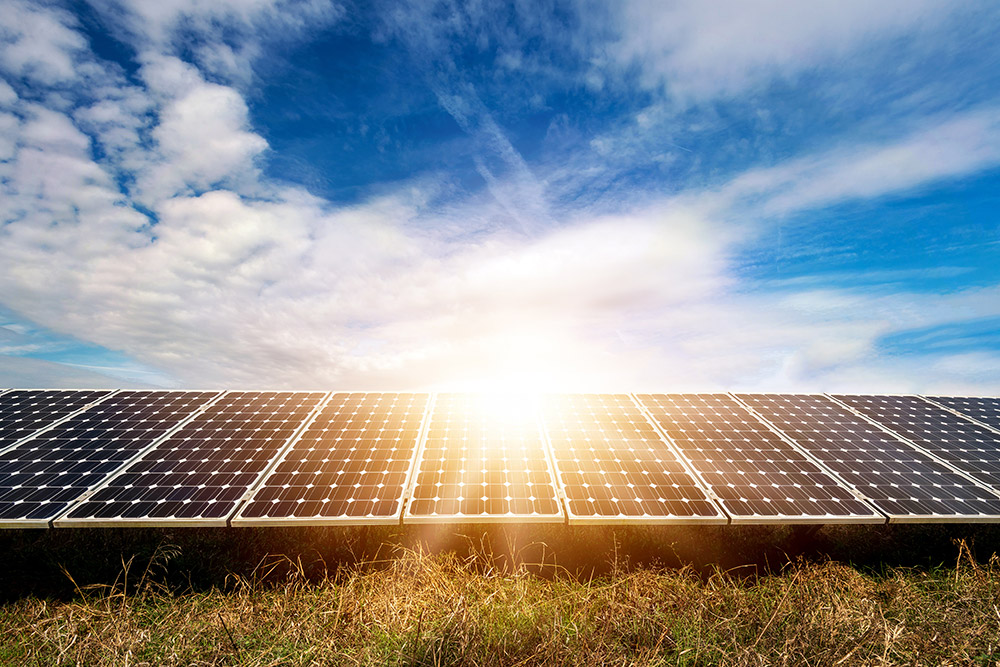

It sounds like something from a joke book or a Christmas cracker. How do you cure a solar cell that’s allergic to sunlight? But it turns out this is a real problem, and for scientists working at the cutting edge of photovoltaics, it’s no laughing matter.



So, what’s the issue exactly? Well, solar cells created using synthetic nanocrystals known as perovskites have shown enormous promise in the last decade. They’re capable of matching or enhancing the efficiency of silicon, but are cheaper and easier to make, more flexible and have a smaller carbon footprint at the manufacturing and dismantling stage of their lifespan.
The catch is that when you expose mixed-halide perovskites to sunlight, the carefully arranged composition of elements within the material become distorted. This interferes with the flow of electrical charge through the material and reduces the efficiency of devices.
In 2020, researchers at Exciton Science found an unlikely solution to this problem. They demonstrated that high-intensity light will undo the disruption to mixed-halide perovskites caused by light at lower intensities, and that this approach can be used to actively control the material’s bandgap.
Their results were published in the high-impact journal Nature Materials, with the title of ‘Light-induced reversal of ion segregation in mixed-halide perovskites’.
The University of Melbourne’s Dr Chris Hall and Dr Wenxin Mao of Monash University first noticed the potential to explore this during a separate experiment.
“We were performing a measurement, looking for something else, and then we came across this process that at the time seemed quite strange,” Chris said.
“However, we quickly realised it was an important observation.”
They enlisted the help of Exciton Science colleague Dr Stefano Bernardi, who led the computational modelling work at the University of Sydney to better understand their surprising solution to the issue.
The implications of the findings are significant, with researchers now able to retain the optimal composition of elements within mixed-halide perovskites when they are exposed to light, which is necessary for use in real solar cells.

The implications of the findings are significant, with researchers now able to retain the optimal composition of elements within mixed-halide perovskites when they are exposed to light, which is necessary for use in real solar cells.
“A lot of people have approached this problem by looking at different compositions of the material or changing the dimensions,” Chris said.
“What we’ve shown is that all you need to do is focus more light onto it.”
The paper was published as recently as October 2020, and it will take 12-18 months or more for it to start becoming widely cited by other researchers, but it’s already making an impact on the field.
Chris, who will present the research at major international conferences from 2021 onwards, has been contacted by representatives of the solar energy industry to discuss the commercial implications of the findings.
Wenxin has engaged in dialogue with colleagues in Germany who are interested in collaborating to investigate the effects further.
Meanwhile, plans are in place within Exciton Science to extend the study to cover a wider range of perovskite materials, with implications not just for their use in solar cells but also LEDs, photodetectors and luminescent light sensors, which could help to create adaptive window glass.
It wasn’t just scientists and businesses who were interested. Promotion of the work by Exciton Science, via a press release titled ‘Tough love: Intense glare helps next-gen solar tech through awkward phase’, resulted in more than 20 stories being published by media outlets around the world, including The Independent, PV Magazine, Optics.org, IFL Science and Cosmos. On social media, Exciton Science posts featuring the research reached approximately 10,000 users and generated 1,200 instances of engagement.
Closer to home, the authors worked with The University of Melbourne’s media team to explore their results further using accessible language via the prestigious Pursuit news service.
And the publication of the research also prompted the producers of ABC’s Catalyst, the national broadcaster’s science journalism television program, to enter into discussions with Exciton Science to contribute towards an episode focused on the future of energy generation, which is due to air in 2021.
For a material that was previously getting stage fright, mixed-halide perovskites are looking much more comfortable in the spotlight thanks to the efforts of Chris, Wenxin, Stefano and their team.